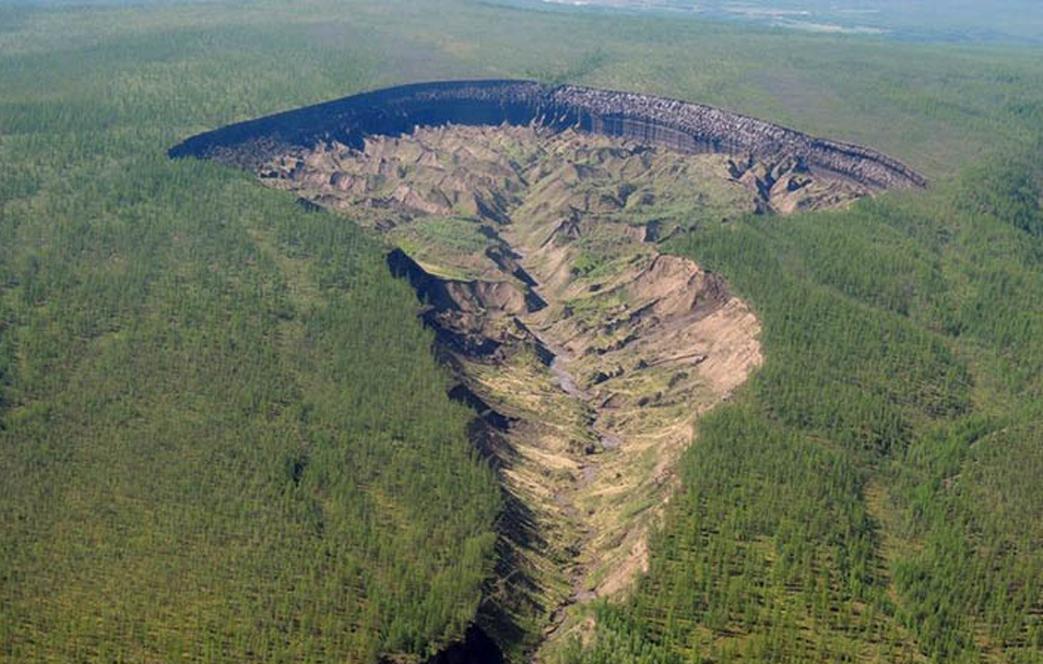Gary sent in the link to https://www.sciencealert.com/siberia-s-huge-doorway-to-the-underworld-is… carcasses … Siberian permafrost has been cracking open again, it is said, and one of the craters is growing so rapidly it is uncovering long buried forests and carcasses of dead animals such as musk ox and mammoth.
 … This is the Betagaika crater – officially a thermokarst or mega slump (in geological terminology). It is 1 km in length and 86m deep. A study published in Quaternary Research (September 2017) has shown onhe of the layers may go back as far as 200,000 years ago. Ancient forest and the remains of frozen musk ox and mammoth, even a horse, have been found.
… This is the Betagaika crater – officially a thermokarst or mega slump (in geological terminology). It is 1 km in length and 86m deep. A study published in Quaternary Research (September 2017) has shown onhe of the layers may go back as far as 200,000 years ago. Ancient forest and the remains of frozen musk ox and mammoth, even a horse, have been found.
The information is interesting as the climate history of Siberia is apparently completely unknown. It is simply assumed it was very cold as the Ice Age is thought to have affected the whole of the northern hemisphere. In other words, it is an assumption and for all we know it was warm as toast in Siberia 20,000 years ago (but that is said tongue in cheek). As would be expected there is a considerable input of CAGW – and the prospect of finding evidence of a rapid decline into cold weather has them quoting climate change with glee – probably because it is necessary to focus on this aspect of their research in order to be published or to garner funds for them to do the field work. Two wood rich layers interpreted as forest beds indicate past climate was as warm as today – if not warmer. The upper bed overlies an old land surface that was eroded. They appear to envisage the erosion happening as a result of a previous incident of permafrost – much as you would expect if you assumed the Ice Age had affected Siberia (as that is the mainstream consensus point of view). Could the erosion have been caused by other factors – water for example, or fire? Presumably this is where they get their idea of 200,000 years from = two interglacial episodes (or warmings). The authors of the study note the dates of the sediments exposed are at present unknown – but will go for laboratory dating at some point in the future. Will they support the mainstream position – and dating? Or will they throw a spanner in the proverbial and come up with trees growing 20,000 years ago?
